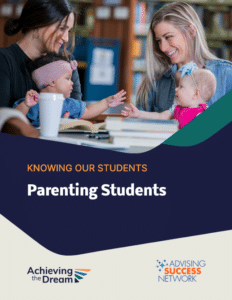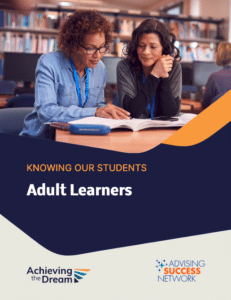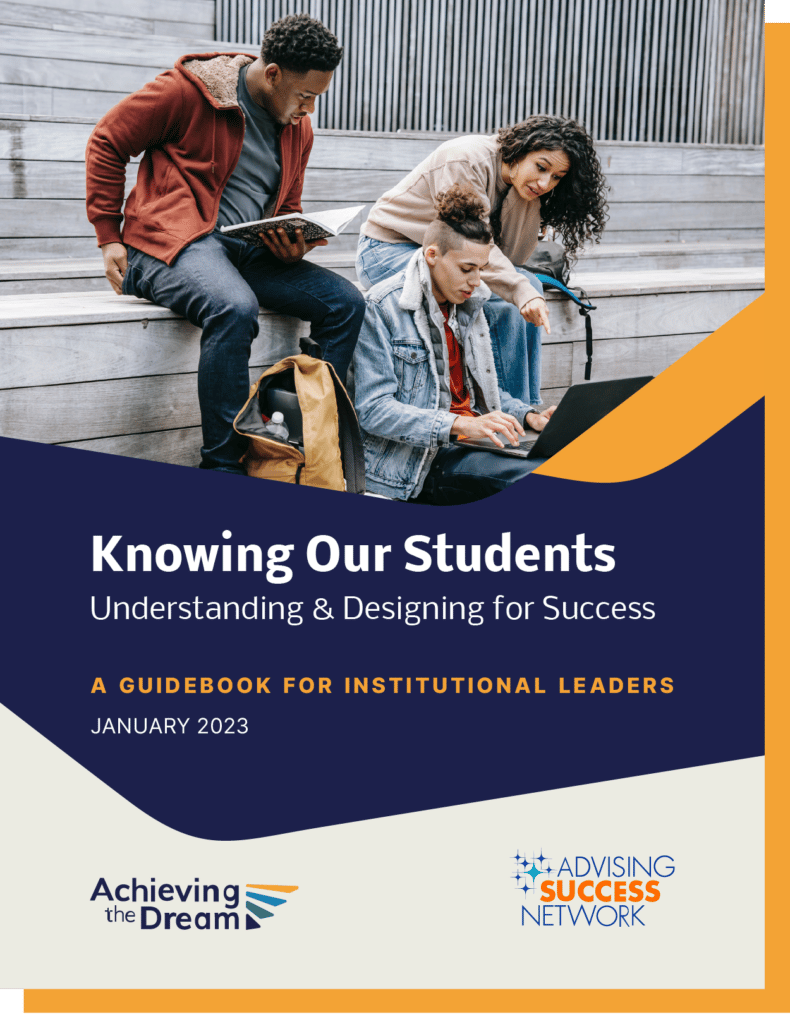Overview
Achieving the Dream believes that truly knowing your students is the first step toward designing student-centered experiences that lead to long-term success. That’s why we, in partnership with the Advising Success Network, created Knowing Our Students: Understanding and Designing for Success, a foundational guide first released in 2021 and subsequently updated. This resource helps colleges move beyond generalizations and data points to develop a fuller picture of their students — who they are, what challenges they face, and what supports they need to thrive.
The guide offers practical strategies, expert insights, and real-world examples to help colleges:
- Collect and use meaningful student data
- Center student voices in institutional planning
- Identify and remove barriers to success
- Build systems that reflect students’ lived experiences
To deepen and expand this work, ATD has developed a series of Knowing Our Students Supplemental Guides that focus on three student groups often underserved by existing systems:
Justice-Impacted Students, who are navigating reentry and stigma after involvement with the justice system
These supplemental guides highlight real student stories and institutional strategies that can be adapted across campuses. Together, these resources provide a robust resource for colleges seeking to create more inclusive, supportive environments that help all students succeed.
Why It Matters
While colleges have made significant strides in data collection and institutional research, too often this information focuses on academic performance or persistence rates without illuminating the lived experiences of students themselves. Many institutions continue to rely on outdated assumptions about a “traditional” student body — assumptions that fail to reflect the realities of today’s learners.
Today’s students include people working full time, raising children, returning after years away from school, or navigating reentry after incarceration. Without a clear understanding of who students are — including the challenges they face and the strengths they bring — colleges risk designing supports that miss the mark. The Knowing Our Students guides help bridge this gap by offering actionable, student-centered strategies to better serve the students of today — and tomorrow.
Key Goals
Together, the original guide and supplemental guides aim to:
- Deepen institutional understanding of the whole student through data, storytelling, and reflective practices
- Expand student-centered strategies that align institutional supports with students’ real-life contexts
- Strengthen advising and support systems with tools and insights informed by national research and student voice
- Foster a campus-wide culture of care and inclusion, where students feel seen, heard, and supported
- identify and address systemic barriers that disproportionately affect underserved student populations
These guides center student stories and practical recommendations that colleges can implement immediately.
Our Partners
This work was developed in partnership with the Advising Success Network (ASN) — a dynamic network of national organizations partnering to support institutions through a holistic approach to advising redesign that supports students’ personal, academic, and career goals. ASN’s support has been critical in advancing the tools, resources, and insights in both the original guide and the new supplemental series.
Knowing Our Students: Understanding & Designing for Success
Updated Edition
Download the GuidebookThis edition includes a “How to Use This Guidebook” companion to walk leaders and educators through each step in the guide.
Download the CompanionPractitioners working through the guidebook are also encouraged to use our interactive tools:
Design Brief Worksheet Student Needs Assessment Worksheet



